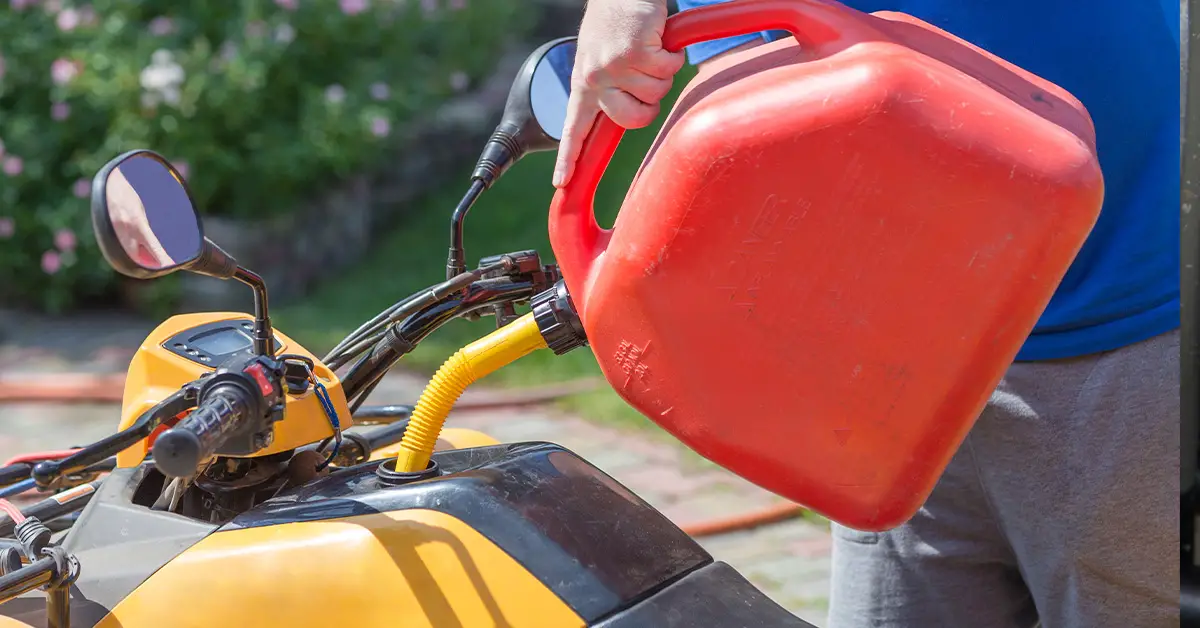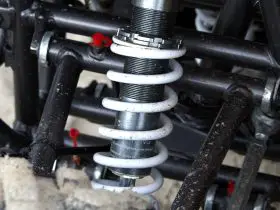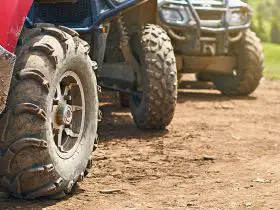There is no denying that buying an ATV is an excellent investment regardless of whether a person is old or young. The productivity, flexibility, and reliability of an ATV are worth your hard-earned money. However, there are certain things you should know so that your investment remains safe for many days to come.
And, that includes maintenance of your all-terrain vehicle. In short, you should be well aware of the functionalities of your ATV and the necessary steps that you should take in terms of maintenance. But what kind of gas does a 4 wheeler use? Also, what kind of oil is good for the ATV? Read on to find out more about it.
Table of Contents
How to find out what type of gas to put in the ATV
The first thing for you to do is grab your owner’s manual and look out for the kind of gas that your ATV needs. That way, you can be sure of what to put inside your four-wheeler. When you read the owner’s manual, you become confident about how a certain thing could work on your ATV.
Some ATVs even carry a sticker on their body that tells you about the type of gas that the vehicle needs. This information comes in handy especially when you aren’t riding your ATV or you buy the 4-wheeler without an owner’s manual. Besides, you can always find the manual on the company website.
So, what kind of gas does an ATV use?
The answer to this question is pretty simple. For a majority of ATVs that you see around, you can use a regular grade 87 and above. And, you can get that from your local gas station. It is similar to getting gas for your quad as you do for your car. However, depending on the exact model that you are using, you may have to use 89 or 91 octane fuel, which is considered premium.
In that case, the owner’s manual helps you a lot to find out the right kind of gas needed. And, it will tell you what to put on the ATV for best results. While some four-wheelers need premium gas, it is not mandatory.
What it means is that when you put 91 or 93 octane gas, it will result in a smoother engine and increased performance. But if you want to save your money you can always opt for the low priced and regular ones.
Not all quads are built the same way. For example, Polaris Sportsman is one of the premium ATVs that comes with lots of features and delivers outstanding performance. Hence, putting regular gas on it will result in engine damage. So, if you have a premium model, it is wise to use premium gas.
Why you should use only the right gas for your ATV
Before you should know the reasons why it is crucial to use high-quality gas, you should understand the octane rating. In simple words, octane number or rating is the extent of compression that the gas can withstand without igniting. It means, that with a higher octane number, the gas can compress more.
Gasoline engines are damaged by the lighting of gas by compression method. And, this is the main reason why you should choose the right gas for your quads. Keep in mind that your four-wheeler has a preset compression ratio and when you put the wrong gas, it causes a knock on the engine.
Another major disadvantage of not using the right gas is the reduced engine performance of the ATV. Uneven power supply, white smoke emission once a while, and frequent knocks are what you get from an unsuitable gas. So, if your quad needs 91 and you are giving it 87, that won’t work.
Moreover, when you are using the wrong gas, you get reduced fuel economy as well. And, for some four-wheelers, the results could be dynamic. Because lower octane will burn faster, it impacts the fuel economy. Therefore, putting 87 on the ATV can backfire on you because you have to spend more on fuel.
4-stroke vs 2-stroke engines
Whether you have a 4-stroke or 2-stroke quad, it will play a major role in terms of gas and oil to be used. In general, around 90% of the ATVs are 4-stroke. Also, they are easy to maintain. In a 4-stroke setup, you get a lubricating oil pan located at the bottom of the engine.
As such, you can use gasoline from your local gas station and need to change oil twice a year. However, this is not the case with a 2-stroke engine. These kinds of engines don’t have a separate oil pan to lubricate moving components. As such, you need to mix oil with gasoline so that the internal components get oil during combustion.
4-stroke ATVs are desired by most riders because they are easy to operate and have a low maintenance cost. Also, they can generate more power and carry more weight. Yet, some riders prefer to have an ATV with a 2-stroke engine.
That’s because the engine revs quicker due to fewer crank rotations and completes the cycle in less time. It results in fast acceleration and this is what many riders favor most.
What is the best oil for your ATV?
When you are riding an all-terrain vehicle, you get to choose from a variety of oil for your vehicle. However, some oils work better for your engine while others might not. Here are three types of oil that you can use.
- Conventional oil – Specially formulated from base stocks, all-natural.
- Synthetic oil – Made from chemical compounds, they can withstand harsh conditions.
- Semi-synthetic oil – They consist of 70% conventional oil and 30% synthetic oil
Oils for ATVs, UTVs, and dirt bikes are similar to those that you use on cars or trucks. Besides, the oils are classified according to their viscosity. They have grades: 0, 5, 10, 15, 20, 25, 30, 40, 50 & 60. Moreover, you get to see the W-sign on grades between 0 and 20, which is an indicator for winter. Oils with higher viscosity are best for hot climate conditions.










